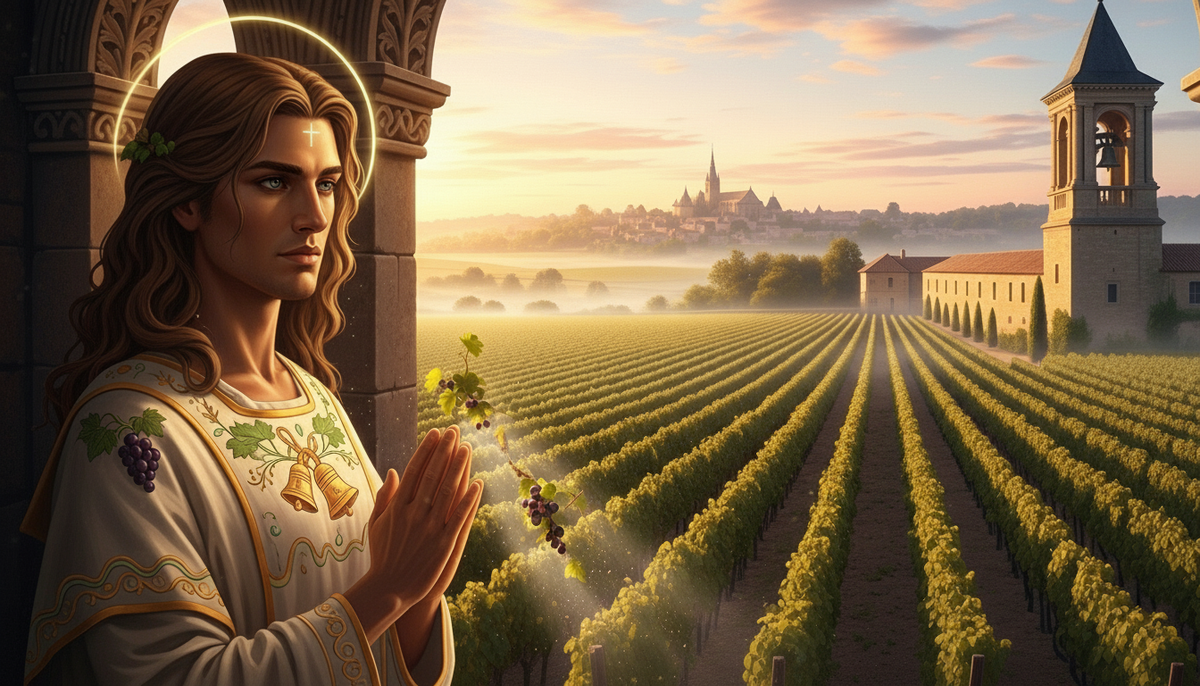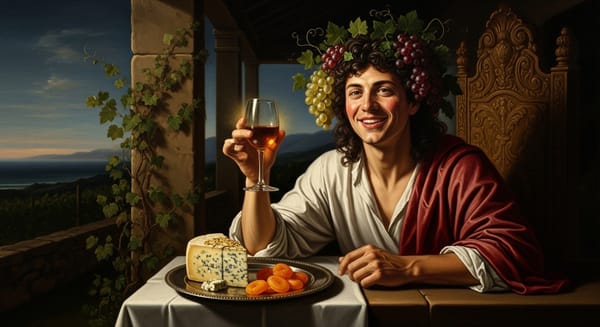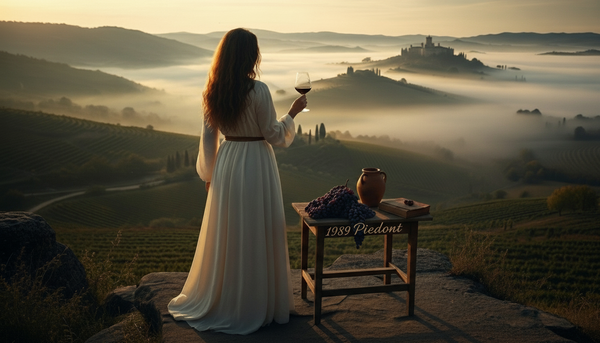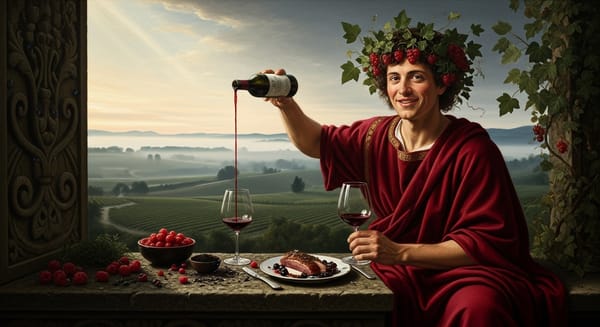**🔔 “Where Bells Become Wine: The Story of Château Angélus”**
Discover the full history of Château Angélus — the bell-born icon of Saint-Émilion. From limestone slopes and Cabernet Franc mastery to its rise as a Grand Cru legend, explore how devotion, terroir, and time shaped one of Bordeaux’s most expressive wines.

How a Saint-Émilion estate turned sound into symbol, Cabernet Franc into silk, and devotion into one of Bordeaux’s most recognizable wines.
I. Prologue: Where the Bells First Found Me
In Saint-Émilion — that ancient limestone hill where monks once carved cellars by candlelight — there is a moment each morning when the light hits the vines at such an angle that it feels like a prayer is being whispered over the land.
And that is where I, Liber, stood when I first heard it.
A bell.
Then another.
Then a third.
Three churches whose voices met at a single point on the slope.
That point became Château Angélus — and the sound did not just bless the vineyards.
It shaped them.
II. The Origins: A Family Rooted in Stone and Song
Though its full glory bloomed in the 20th century, the roots of Angélus date back to 1782, when the de Boüard de Laforest family acquired their first parcels in Saint-Émilion.
By 1909, they had established the core of what would become Château Angélus — terraces and slopes facing south-southwest, drenched in light, protected from wind, nourished by limestone and clay.
Yet at that time, no one imagined this estate would one day become a global symbol of Saint-Émilion power and grace.
It grew slowly, steadily, like a song finding its melody.
Through wars, vineyard replantings, and decades of quiet work, the family held the land.
But the Angélus we know today — bold, architectural, unmistakable — crystallized under Hubert de Boüard, who joined the family estate in 1976 and guided it into legend.
III. The Land: A Theater of Limestone and Light
Château Angélus sits in a natural amphitheater on the pied de côte of Saint-Émilion — the lower slopes that benefit from the warmth of the hillside and the drainage of the plateau.
The terroir is a complex mosaic:
- Clay over limestone (power and backbone)
- Sand and gravel lower down (silkiness and perfume)
- Pure limestone outcrops (freshness and lift)
This is a land that favors Cabernet Franc — a grape I have always loved for its precision, its perfume, its ability to speak clearly even in dense music.
It is the soul of Angélus.
IV. The Bell: From Legend Into Label
There are stories mortals tell about how the estate got its name.
Some say vineyard workers heard the bells from the three surrounding churches —
Saint-Martin, Saint-Émilion, and Mazerat — ring clearly from this particular plot.
Others say the bells seemed to ring for the vines,
as if the land itself were the center of their call.
Whatever the mortal truth, I know this much:
the sound shaped the estate’s destiny.
By the early 20th century, the estate officially adopted the name “Angélus,”
and the bells became its emblem — not as ornament, but as identity.
Because at Angélus, wine is not made.
It is rung into being.
V. The Modern Era: Precision, Power, and the Rise to the Summit
Under Hubert de Boüard, Angélus transformed from promise into phenomenon.
He modernized the cellar, introduced parcel-by-parcel vinification,
championed meticulous viticulture, and believed in the expressive potential
of Cabernet Franc at a time when Merlot was the easy applause line.
His philosophy was simple but revolutionary:
“Let the grapes decide, not the style.”
In 1996, Angélus was promoted to Premier Grand Cru Classé B.
And in 2012, after decades of devotion, it reached the summit:
Premier Grand Cru Classé A — the highest classification in Saint-Émilion.
Though the classification has since changed, the reputation remains untouchable.
VI. The Wines: The Bells, in Liquid Form
Angélus wines are unmistakable:
🍇 Château Angélus (Grand Vin)
The signature.
Deep, dark, aromatic — black cherry, violet, espresso, graphite.
A choir of Cabernet Franc and Merlot in perfect balance.
Velvety, structured, operatic.
🍇 Carillon d’Angélus
Elegant, refined, precise.
A second wine with the poise of a first — bright fruit, floral lift, polished tannins.
🍇 N°3 d’Angélus
Silky, charming, expressive — the estate’s most immediate voice.
Every bottle is shaped by:
- whole-berry fermentation
- gravity flow cellars
- oak used as frame, not mask
- the philosophy of listening more than controlling
When the wine is poured, the bells seem to ring again.
VII. The Cellars: Cathedrals of Craft
The newly built Angélus winery is a modern cathedral:
- Circular vat rooms
- Black stone floors
- Copper and gold detailing
- Light falling like music from above
- Barrels arranged with architectural precision
It is not merely a place to make wine.
It is the physical manifestation of the estate’s aesthetic —
a mix of devotion, craft, and bold self-awareness.
Mortals walk through these cellars as if entering a sanctuary.
And I, Liber, feel at home there.
VIII. Liber’s Reflection: Why I Favor Angélus
Some wines please mortals.
Some please critics.
Some please merchants.
Angélus does something different —
it pleases time.
It has power without violence, richness without heaviness,
precision without sterility, beauty without fragility.
It is a wine made by people who believe not in shortcuts,
but in symphonies.
When I taste Angélus, I taste:
- sunlight soaked into limestone
- bells echoing across centuries
- Cabernet Franc singing its highest note
- a family’s devotion
- and the quiet pride of a vineyard that knows what it is
There are louder wines.
There are rarer wines.
There are older wines.
But none ring so clearly.
🍷 Final Benediction
Château Angélus is not simply a Premier Grand Cru.
It is a bell tower in the vines.
A landmark of beauty and conviction.
A reminder that wine, at its best, is both craft and calling.
And so I, Liber, raise my chalice to the bell on the label —
because few vineyards in this world have learned to turn sound into taste
and let music become wine.





